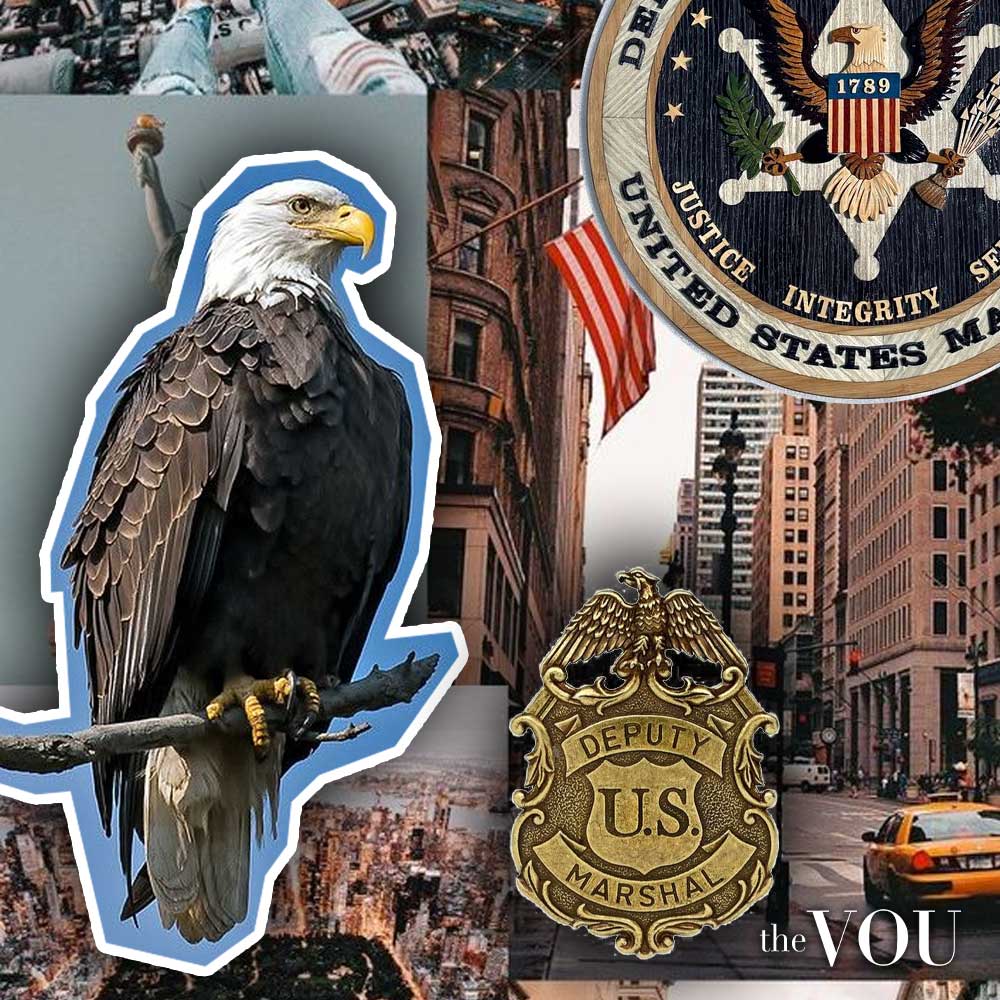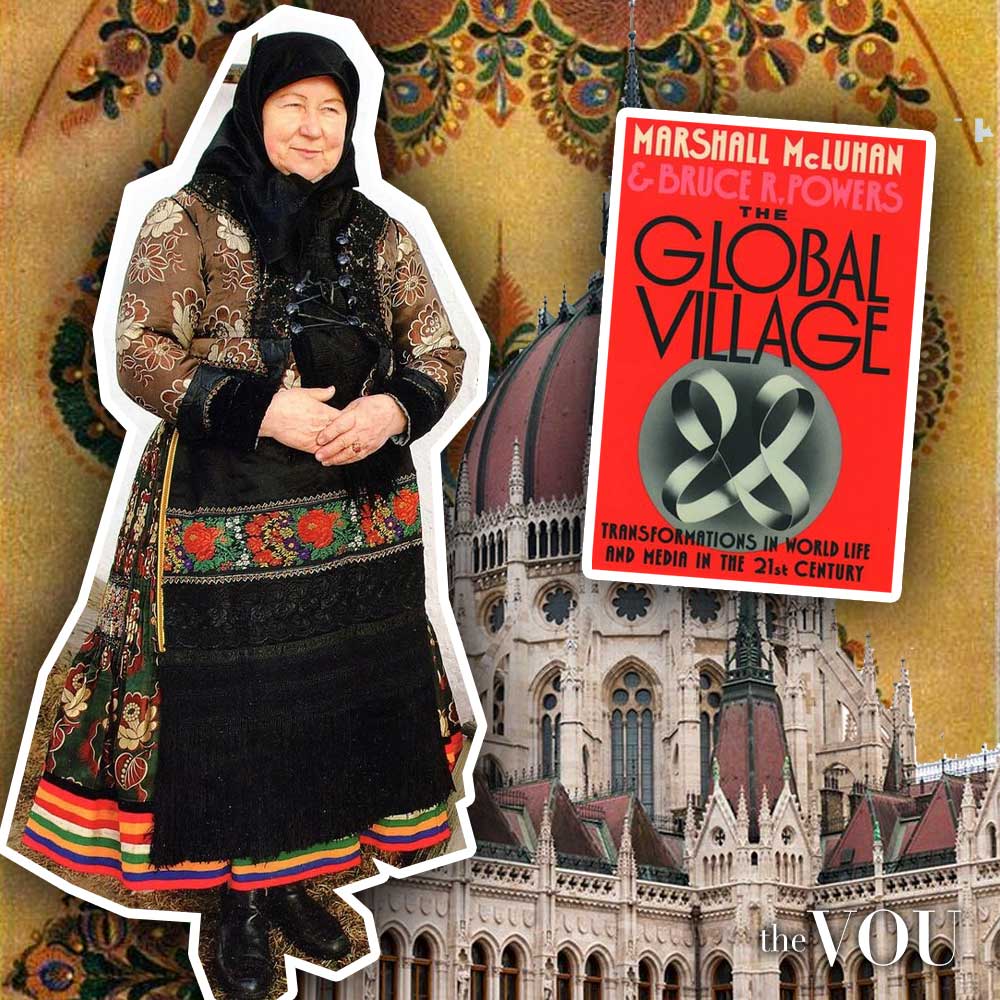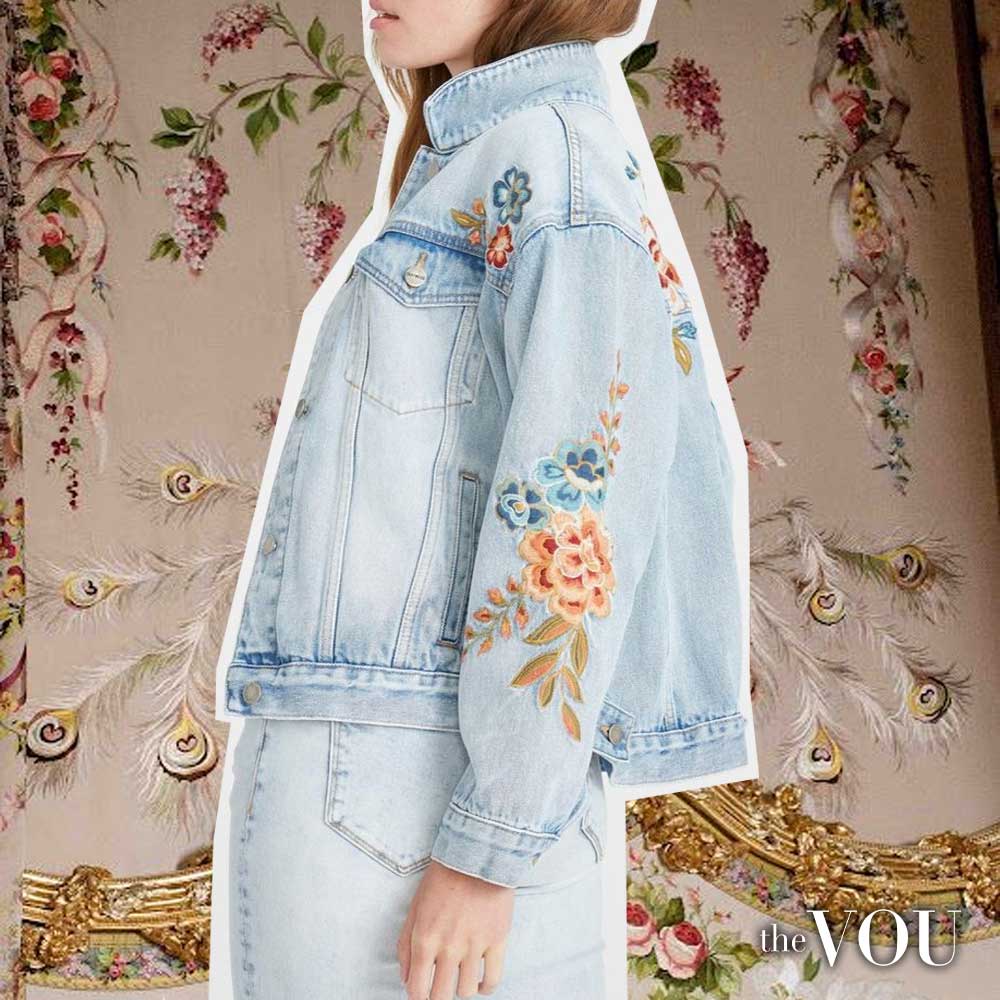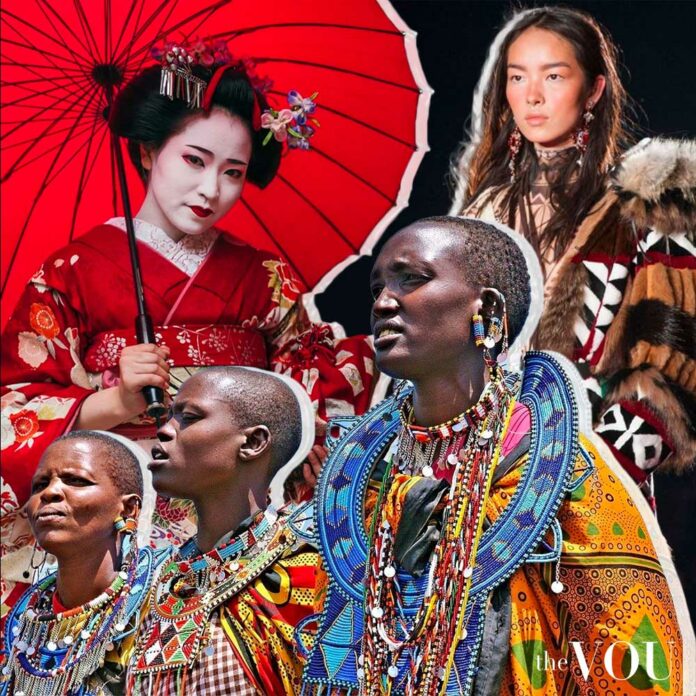There is a lot of discussion about what fashion is, and what it means.
Is it just clothes? Are fashion and style different? Is fashion an art? Are there differences between fashion and “Fashion?”
Most often, fashion is seen as ‘the industry’. The creative expression of designers, fashion houses, and brands.
It’s an international business with a worldwide presence and the ability to cause economic waves.
In France for example, fashion is so important to the country socially and economically that the industry is regulated and supported quite heavily by the government.
In this article, we will explore the various ways in which culture impacts fashion and style, from historical traditions to contemporary trends.
From Culture to Fashion and Back
But the word ‘fashion’ also means something popular or in style, something ‘of the moment’ – a zeitgeist. What’s ‘in fashion’ at any one moment speaks to wider trends in society, politics, and the arts.
Trend forecasters like WGSN and others look at what’s happening in culture, to whether or not countries are becoming more nationalistic, or fluctuations in the economy, and relate that quite directly to the length of skirt hems and the silhouettes of garments.
The clothes we wear represent who we are and, more importantly, who we want to be
Fashion speaks for us. It’s almost like a language. Rae Tutera, now a clothier and partner at Bindle & Keep, a bespoke suiting company based in New York City, knows this more than most.
His job now sees him working with the LGBTQ community to create suits for his trans clients that help them mirror on the outside who they are on the inside.
These visual cues not only provide self-affirmation and a confidence boost for the wearer but also provide visual cues to others as to how to approach and identify them.
Having gone through the experience himself as a trans man, Tutera, who is one of the subjects of the 2016 documentary Suited, feels a certain connection with his clients.
But fashion is also art. Across the globe, museums host costume institutes, aimed at contextualizing fashion as the art form that it is.
Most notably, the Victoria & Albert Museum and the Metropolitan Museum of Art, consistently host fashion exhibitions.
In 2011, the travelling Savage Beauty exhibition debuted featuring pieces designed by Alexander McQueen for his namesake brand, as well as the Parisian label Givenchy.
Ranging from his first collection to his last, the exhibit was an example of how, like any other art form, fashion can be used to tell stories, as in The Widows of Culloden, and speak to societal issues and norms, namely with the VOSS presentation from 2011 which dealt with mental health.
The exhibition went on to become the most popular show in the history of the V&A and one of the most visited shows at the Met.
What is Fashion Culture?
The garments we wear are woven into the world’s history and heritage.
For example, saris used to be worn without a blouse or petticoat underneath them but, under the British Raj, this was seen as crude to prudish Victorians.
Fashion and style are not solely about individual expression, but are also deeply influenced by the cultural context in which they exist.
From the vibrant colours of traditional garments to the sleek lines of modern designs, fashion reflects and responds to the cultural influences that shape our world.
Culture encapsulates a community’s collective values, beliefs, norms, practices, rituals, and fashion.
According to Clifford Geertz, a renowned anthropologist, culture is “a system of inherited conceptions expressed in symbolic forms through which people communicate, perpetuate, and develop knowledge about and attitudes toward life” [1]
Fashion, dress, and clothing cultures, as such, are conceived as fluid, tools of intervention, disruption, performance, activism, or community engagement and examined concerning issues of class, identity formation, decolonization, diversity, and inclusion.
Research topics include everyday dress, memory and dress, textiles heritage and manufacture, fashion and health, the body and garment fit, consumption and behaviour change, costume and performance, slow fashion, craft and global fashion.
What Constructs Culture?
Cultures encompass tangible artefacts, aesthetics, patterns, motifs, and symbols expressed in traditions and intangible aspects such as shared values and belief systems.
Sociologist Émile Durkheim explains that culture consists of “collective representations” that give a community a unique character. [2]
Analogous to the threads in a fabric, each element contributes to the overall texture and appearance of the cultural landscape.
1. Beliefs and Symbols

Belief systems – whether religious, philosophical, or ideological – define how a community understands the world.
Symbols like flags, religious motifs, artistic patterns, and fashion styles unite individuals under a common identity.
The Bald Eagle, representing freedom and strength, has profound significance in American culture. [3]
2. Practices and Rituals
Practices and rituals are recurring activities or ceremonies that strengthen community cohesion.
The Japanese tea ceremony, meticulously choreographed and symbolic, is essential in Japanese culture. [4]
3. Transmission and Change

Far from static, culture evolves through internal transformations and external influences.
Marshall McLuhan’s “global village” concept demonstrates how technological advances in communication have made the transmission of cultural elements more accessible. [5]
As such, essential elements, artefacts, aesthetics, patterns, motifs, and symbols that define a culture are adopted and used across several segments, from architecture to art and clothing manufacturing.
4. Acculturation and Assimilation

Acculturation describes the blending of two or more distinct cultures into a new, hybrid form.
Assimilation describes the absorption of one culture into another; in the process, some of the original cultural markers are lost.
The most visible way of acculturation and assimilation is widespread in the fashion industry, as fashion designers create garments, footwear, and accessories.
The Cultural Context of Fashion and Style
Traditional Garments and Attire
One of the most evident ways culture influences fashion is through traditional garments and attire.
Different cultures have distinct styles and clothing traditions, often deeply rooted in history and heritage.
For example, the vibrant and ornate saris worn by women in India reflect the country’s rich cultural heritage and celebrate its diverse regional traditions.
Similarly, the kimono, a traditional Japanese garment, is not only a symbol of elegance but also represents the values of modesty and respect.
Materials and Textiles
Cultural influences on fashion can also be seen in using materials and textiles.
Different regions and cultures have access to other resources that shape the materials used in clothing.
For instance, silk is used in Chinese fashion because of the country’s long history of sericulture and silk production.
The intricate patterns and designs found in African textiles, such as the vibrant Ankara prints, reflect the continent’s rich cultural heritage and craftsmanship.
Social and Political Movements
Furthermore, cultural influences on fashion extend beyond traditional garments and materials to encompass broader social and political movements.
Fashion has often been used as a form of protest or expression of identity.
For example, during the Civil Rights Movement in the United States, African Americans used fashion to challenge societal norms and assert their cultural pride.
The afro hairstyle and dashiki garments became symbols of black power and resistance.
Cultural Appropriation in Fashion
Cultural appropriation is an important issue because of the link between heritage and culture.
Cultural appropriation refers to adopting elements from another culture without understanding or respecting their significance.
This can lead to the commodification and misrepresentation of cultural symbols, often perpetuating stereotypes and erasing the cultural context.
In 2015, Glastonbury Festival banned the sale of Native American headdresses because of a Change.org petition that called the wearing of the headdresses by non-Natives “an offensive and disrespectful form of cultural appropriation.”
Take the durag from the African American community.
While durags have the utilitarian purpose of protecting and preserving hairstyles in the black community, they have also become indicative of a shared cultural experience.
This is why there’s a backlash when celebrities like Kylie Jenner don a piece like a durag.
The item of clothing isn’t just the nylon it’s made of: it has become shorthand for the struggles and triumphs of a particular life experience.
Our clothes tell stories of our culture and heritage – things that can’t easily be shrugged off and taken off at will.
Tradition is also passed down in the creation and construction of our clothes.
The way things are made, materials, and processes are all embedded into our communities and cultures.
Take block printing in India or Miao embroidery – these traditions are the livelihoods of the skilled craftspeople who make them and the lifeblood of their communities.
Most of the best tweeds and tartans are still made on the islands of Scotland, and haute couture requires ateliers in Paris.
These skills are generally passed down from person to person, generation to generation, and learned through hands-on apprenticeships by ever-shrinking amounts of people.
In recent years, cultural appropriation has become a significant issue in the fashion industry. Several communities say their cultures are not costumes to be worn by others purely for aesthetic effect.
Fashion and Culture Beyond Clothing
Culture’s influence on fashion is not limited to clothing alone. It also extends to accessories, makeup, and hairstyling.
For example, traditional African hairstyles like braids and locs have gained popularity worldwide, with many celebrities and influencers embracing these styles.
Similarly, traditional accessories like turbans, bindis, and henna tattoos have become a global fashion trend, often divorced from their cultural significance.
Fashion and style are deeply intertwined with cultural influences. From traditional garments and materials to broader social and political movements, culture shapes and informs our fashion choices.
However, it is crucial to approach cultural influences with respect and understanding, avoiding cultural appropriation and embracing diversity.
Clothes are – quite literally – embedded in the fabric of our daily lives.
But they have a hidden history—a past that goes hand in hand with the history of the human race itself.
When we put on a shirt in the morning, wrap a scarf around us when we’re cold, or slip into a fancy dress for a party, we inhabit our history, politics, and culture, creating a visual shorthand of who we are.
“It takes time in the morning for me to become George. By the time I’m dressed, and put the final air of polish on the slightly stiff but quite perfect George, I know fully what part I’m supposed to play,” – Colin Firth as George in an opening scene of 2009’s A Single Man.
And whether conscious or not, the same can be said for most of us.
Key Takeaways
- Fashion and style are influenced by the cultural context in which they exist.
- Traditional garments and attire reflect cultural heritage and regional traditions.
- Cultural resources shape the use of materials and textiles in fashion.
- Fashion has been used as a form of protest and expression of identity.
- Cultural appropriation in fashion is a significant issue that should be avoided.
- Cultural influences extend beyond clothing to accessories, makeup, and hairstyling.
- It is essential to approach cultural influences with respect and understanding.
Bibliography
[1] Geertz, C. (2017) The interpretation of cultures. New York: Basic Books.
[2] Durkheim, E. (2016) The elementary forms of religious life, In Social Theory Re-wired, pp. 52-67, Routledge.
[3] Terrell, E. (2019) The Bald Eagle, Creature of Nature and an American Symbol. The Library of Congress.
[4] The Japanese tea ceremony, The Metropolitan Museum of Art.
[5] McLuhan, M. (1994) Understanding media: The extensions of man. MIT Press.
After years of managing hundreds of fashion brands from London's office of a global retailer, Mandy has ventured into freelancing. Connected with several fashion retailers and media platforms in the US, Australia, and the UK, Mandy uses her expertise to consult for emerging fashion brands create top-notch content as an editorial strategist for several online publications.
With over twenty years of front-row fashion and styling events, collabs with haute-couture houses, and a PhD in Luxury Fashion, Laurenti is an expert in crafting personalised looks that depict old-money sophistication.
A passionate advocate for inclusivity and diversity, Aidan is the driving force behind The VOU as its Editorial Manager. With a unique blend of editorial acumen and project management prowess, Aidan's insightful articles have graced the pages of The Verge, WWD, Forbes, and WTVOX, reflecting his deep interest in the dynamic intersection of styling with grooming for men and beyond.
With years of expertise in high-end fashion collabs and a PhD in Sustainable Fashion, Ru specialises in eco-luxe wardrobes for the modern gentleman seeking understated refinement.


